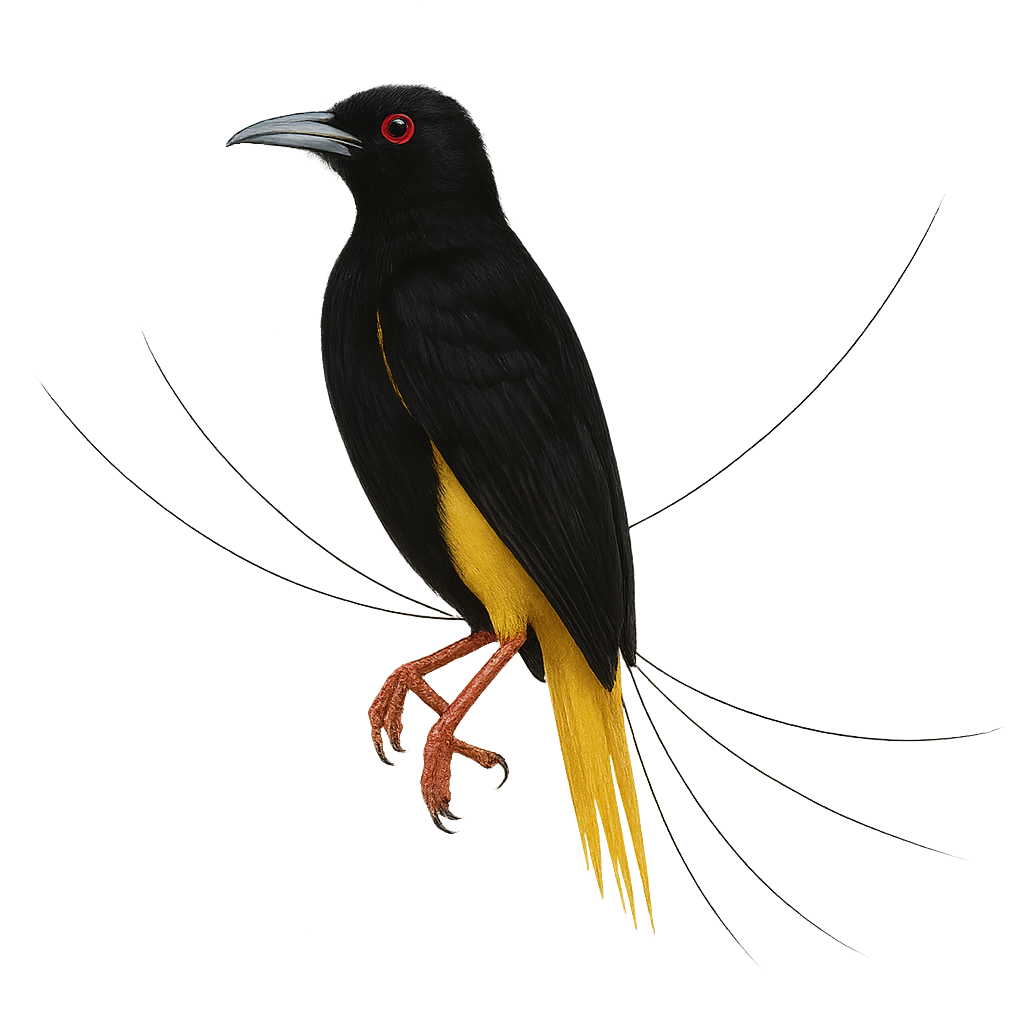Your wildlife photography guide.
Explore the twelve-wired bird-of-paradise in detail, study its behavior, prepare your shots.
Where to observe and photograph the twelve-wired bird-of-paradise in the wild
Learn where and when to spot the twelve-wired bird-of-paradise in the wild, how to identify the species based on distinctive features, and what natural environments it inhabits. The WildlifePhotographer app offers tailored photography tips that reflect the twelve-wired bird-of-paradise’s behavior, helping you capture better wildlife images. Explore the full species profile for key information including description, habitat, active periods, and approach techniques.
Twelve-wired Bird-of-paradise
Scientific name: Seleucidis melanoleucus

IUCN Status: Least Concern
Family: PARADISAEIDAE
Group: Birds
Sensitivity to human approach: Suspicious
Minimum approach distance: 10 m
Courtship display: June to August
Incubation: 18-20 jours
Hatchings: June to September
Habitat:
tropical forests, mangroves
Activity period :
Primarily active during the day, with peak activity in the morning and late afternoon.
Identification and description:
The Twelve-wired Bird-of-paradise, or Seleucidis melanoleucus, is a remarkable bird known for its striking plumage and courtship displays. Males feature black and white feathers with distinctive golden wires on their tails, used to attract females. This bird inhabits the rainforests of New Guinea, feeding primarily on fruits and insects. Its song plays a crucial role in its social behavior, often heard at dawn. Although its habitat is threatened by deforestation, it remains relatively common in certain areas. Its ability to adapt to various forest environments gives it some resilience against environmental changes.
Recommended lens:
400 mm – adjust based on distance, desired framing (portrait or habitat), and approach conditions.
Photography tips:
To photograph the Twelve-wired Bird-of-paradise, focus on early morning hours when the light is soft and the bird is most active. Use a telephoto lens of at least 400mm to capture the details of its plumage without disturbing it. Patience is key, as this bird can be suspicious. Remain still and quiet to increase your chances of success. Consider using a tripod to stabilize your camera and achieve sharp images, especially in the low-light conditions of tropical forests.
The WildlifePhotographer App is coming soon!
Be the first to explore the best nature spots, track rutting seasons, log your observations, and observe more wildlife.
Already 1 428 wildlife lovers subscribed worldwide

